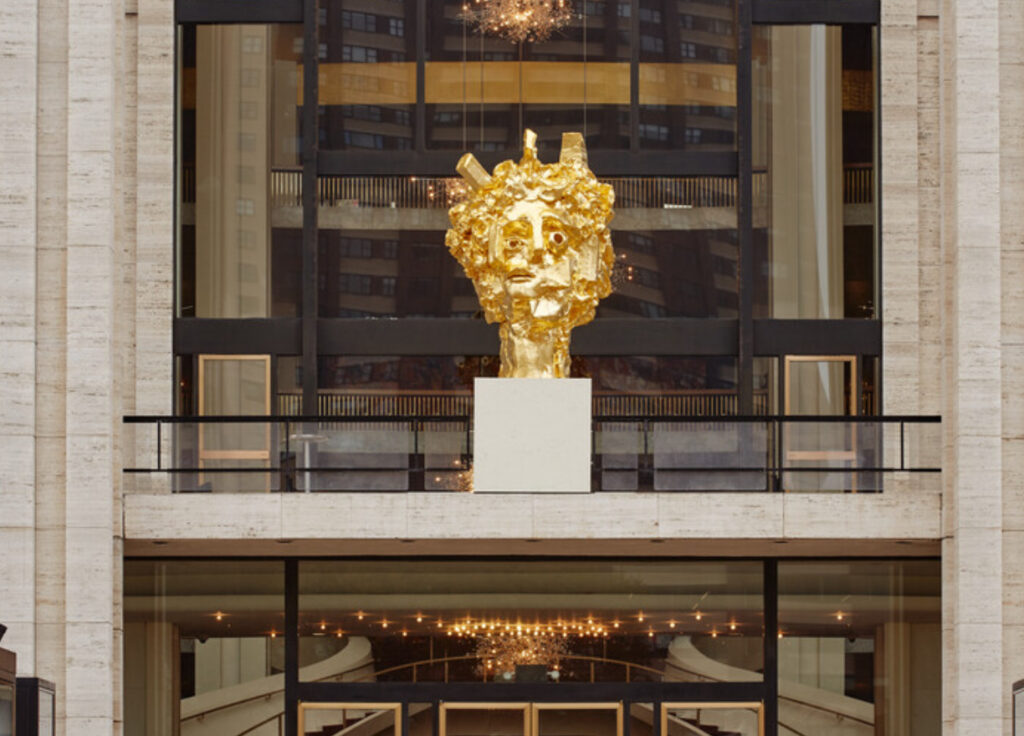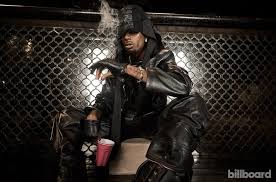In 2019, visitors walking into the Metropolitan Opera at Lincoln Center were met not only by the usual murmur of anticipation and chandeliers twinkling overhead, but by a different kind of spectacle. Floating across the Grand Tier level of the opera house, Constellation of Voices, a large-scale installation by George Condo, rearranged the visual atmosphere. It was confrontational, ecstatic, chaotic. The installation didn’t just hang there—it spoke, in ways that both clashed with and complemented the Met’s historic grandeur.
Condo’s work is known for its fragmentation, a splintering of the figure into emotive pieces that collide and overlay. His portraits are never just of people—they’re of psychological states, inner voices, memories, and traumas. And Constellation of Voices brought this sensibility into a space dominated by an art form that thrives on voice: opera. It was a dialogue between visual and sonic art, between the structure of performance and the unruliness of inner life.
A Meeting of Extremes
To understand Constellation of Voices in context, it helps to consider the collision it stages—not only between image and sound but between Condo and the Met itself.
The Metropolitan Opera is an institution rooted in tradition. It lives in a world of continuity: seasons roll on, the curtain rises, voices soar. But this sense of order is deceptive. Opera, at its core, is melodrama. It’s a space of emotional extremes. In this way, Condo’s work doesn’t disrupt so much as reveal what’s always been lurking in the opera house walls.
The installation comprises several monumental paintings—dense, colorful, frenetic. Faces emerge and vanish. Bodies fragment. The composition is restless, as if in motion even when still. There’s a deliberate overloading of the visual field. Condo said the work is meant to be “like hearing multiple arias at once.” That’s a helpful cue. The eye doesn’t settle; it shifts, reorients, tries to find clarity in the blur. It’s overwhelming, just like the Met’s own wall of sound can be.
But here’s the twist: while opera uses music to structure emotional chaos, Condo lets the chaos stay wild. In his constellation, there’s no resolution—just constant inner noise, a chorus without harmony.
Portraiture After the Fall
Condo emerged in the 1980s, brushing against the same scene that saw the rise of Jean-Michel Basquiat and Keith Haring. But where others went direct—political graffiti, raw symbolism—Condo went sideways. He revived classical techniques only to twist them. His portraits nod to Old Masters but are grotesquely off, warped with Cubist logic, manic distortion, and absurd humor.
In Constellation of Voices, you see this vocabulary at full scale. The faces don’t resemble individuals so much as moods. They leer, scream, stare blankly. They’re crowded together, piled and jumbled, like a social anxiety dream. There’s no attempt to create distance between the viewer and the subject—you’re in it, surrounded by it, part of the constellation.
This brings us to an important idea: Condo’s work isn’t about psychological insight in the traditional sense. He’s not painting people who feel things. He’s painting what it feels like to be overwhelmed by feeling itself. In his universe, the “voice” isn’t a means of expression—it’s a symptom. It just comes out, whether we want it to or not.
The opera house, as a site, becomes more than a backdrop. It’s a crucible. Condo’s constellation floats above the heads of attendees who have dressed up, come out, and sat down to listen to the great arias of Puccini, Verdi, or Wagner. These are stories of passion, betrayal, madness. But Condo’s paintings suggest that all of those things are happening at once—inside every person in the room.
The Visual Noise of Now
We live in an age of constant chatter. Notifications ping. Feeds update. Our attention is pulled in a thousand directions. Condo taps into this state—not with cynicism, but with an intuitive understanding of what it means to live with overlapping signals, feelings, and identities.
Constellation of Voices works not just as an artwork, but as a cultural mirror. It’s a portrait of the present tense. It asks what it means to see when we’re always overstimulated, and what it means to be heard when everyone is already speaking. And it does this without offering comfort.
That might explain why some viewers found the installation jarring. It breaks the elegant aesthetic of the Met. Its rawness clashes with the velvet seats and golden railings. But that’s the point. Condo isn’t here to play along. He’s here to remind us that beneath the performance—of opera, of civility, of identity—there’s a hum of chaos.
Seeing the Sound
One of the most effective aspects of the installation is how it reorients the viewer’s relationship to sound and image. Normally, in the opera house, the eyes follow the stage while the ears take in the music. Condo reverses this logic. You “hear” his paintings. Not literally, of course—but the density, the overlapping expressions, the clashing forms—they create a synesthetic effect. You can almost imagine the noise of all those voices, all those characters, singing different things at once.
This isn’t entirely metaphorical. Condo has often collaborated with musicians and sees painting as a kind of visual composition. In fact, his earlier works have been described as “psychological cubism,” a term that emphasizes not just fractured form but fractured selfhood. Think of Picasso meets jazz. Or Francis Bacon on amphetamines.
That energy carries into Constellation of Voices. It doesn’t ask to be interpreted; it demands to be experienced. Like an opera in a language you don’t speak, you don’t need to understand every detail to feel it hit.
Art in the Age of Institutions
On one hand, it’s a sign of evolving cultural openness. Condo, once an outsider, is now celebrated at the highest level. That’s a familiar arc. The avant-garde eventually gets canonized. But the way Constellation of Voices functions inside the space is still resistant. It doesn’t soothe. It doesn’t flatter. It asserts.
You could see it as a form of institutional critique—not in the direct, confrontational style of a Hans Haacke, but in a more psychological register. Condo’s paintings don’t accuse the Met of elitism or conservatism. Instead, they psychologize the space. They ask what it feels like to be inside such an institution. What voices are allowed, and which are suppressed? Who gets to sing, and who is silenced?
The answers aren’t clear. But the question hangs in the air, along with the constellation.
The Opera House as Mind
Seen from another angle, Constellation of Voices turns the opera house into a kind of mind. The stage is the conscious performance—what we present. But Condo’s installation hovers above, like a subconscious—fragmented, unfiltered, always active.
This metaphor is especially compelling in an age obsessed with image management. We curate ourselves constantly: on social media, in our careers, in public. Condo’s messy, unfiltered constellation pushes back against that polish. It’s the noise we try to suppress. The many selves we carry but rarely show.
Opera, of course, has always been interested in this double life. The aria is where characters break from action to reveal their inner world. Condo’s work can be seen as a visual aria—a solo of the psyche, rendered not in sound but in strokes.
Afterimage
There’s a temptation to tidy up here, to draw some concluding statement about the flow of art forms or the ongoing relevance of Condo’s vision. But that would miss the point.
Constellation of Voices doesn’t resolve. It lingers. Like the final note of an aria, it echoes after it ends.
The opera house returned to normal. The installation came down. But for those who saw it, there was a shift. A reminder that behind the velvet, behind the voices, behind the stories we tell ourselves—there’s something wilder, more fractured, more real.
No comments yet.








